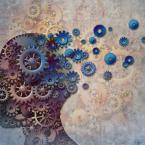
As our communities and workplaces continue to evolve and become more diverse, we need to pay attention to what professional practices may need to change along the way. We need to examine our unconscious bias.
What Is Unconscious Bias?
Unconscious bias includes the social stereotypes about certain groups of people that we form outside our own conscious awareness. Another definition: Prejudice in favor of or against one thing, person, or group compared to another.
“As leaders, when we are influenced by a bias we don’t ever know we have, we can make the wrong decisions. Those decisions could result in not hiring or promoting the right person, simply because they don’t fit our perception of an effective leader.” – Susan Taylor, CEO, Generon International
People can harbor unconscious bias against a specific group or person even when they consciously believe that unfair treatment and judgment of others are wrong.
Example: Have you ever heard someone in the workplace make a comment such as, “Are we sure she would be the best choice as project lead? She has a couple kids at home. Would this project be too stressful for her?”
Although we may think we’re looking out of the best interests of the company and placing the best person in the job, we cannot assume that our co-worker being a parent would deter them from being the ideal fit for the position.
Where Does Bias Come From?
We need to ask ourselves where these biases originate.
Biases originate in our unconscious. We have approximately 11 million bits of data per second running through our brain with only 40 bits per second being able to be processed by our conscious mind. As much as we want to say to ourselves, “I am not biased” or “I do not judge others,” we all do, no matter how educated and aware we may be.
Our bias is formed from our experiences, whether good or bad, healthy or unhealthy. These biases come from our own experiences, media portrayals, family, friends, community, educational institutions – the list goes on and on.
When we accept these beliefs and/or experiences as truth, we can start down a slippery slope. Our belief could be incorrect and untrue. We do not realize that our norm is not true for everyone until challenged. We miss out on getting others’ perspectives, so many times in life, we pay attention to that of the majority or dominant culture and not that of the minority cultures or subcultures.
Neuroscientists have shown that the conscious mind provides 5% or less of our cognitive (conscious) activity during the day – and that’s in people who are more aware. Many of us operate at just 1% consciousness.
What Can We Do To Combat Bias?
As unnerving as the statistics may be, there is hope. Now that we have a better understanding of where these biases come from, it’s time to make the decision for yourself. Are you willing to become more aware of your own unconscious bias? If so consider taking the IAT Implicit Bias Test created by Mahzarin Banaji of Harvard University, Anthony Greenwald of University of Washington, and Brain Nosek from the University of Virginia. The IAT is a test designed to detect the strength of a person’s automatic associations between concepts and attributes.
It’s important once you know of unconscious bias to be able to label what types of bias that are likely to occur that affect not just our personal lives but of the workplace. Are you willing to challenge these biases and not make assumptions?
This is not easy, but it is possible. It starts with becoming aware and being willing to do something about it.
READ MORE: Digging Deeper into Unconcious Bias
Bob Moritz, U.S. Chairman and Senior Partner at PricewaterhouseCoopers, said in a video conference on the topic of race that it was “a conversation that is difficult, at times uncomfortable, but the reality is if we don’t talk about it, we will never make the progress that’s necessary.” As uncomfortable as digging into one’s own bias can be, it’s freeing to know that the bias no longer needs to be truth and that we can embrace our differences.
“Strength lies in differences, not in similarities.” – Steven R. Covey




